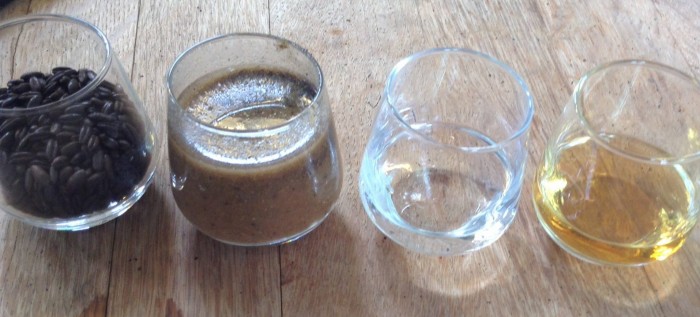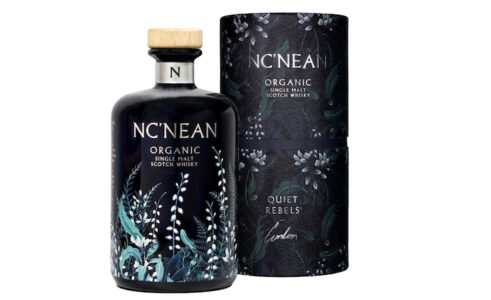Beer and single malt have a lot in common. Both use barley as their main ingredient, and both rely on malting to transform the un-fermentable starchy interior of barley into sweet sugars irresistible to alcohol-producing yeast. And while you wouldn’t want to drink a pint of it, most whiskeys start out looking something like beer: a grain mash fermented with yeast.
That’s where the similarities diverge, however. Brewers boil their wort, add hops, and pay very close attention to the fermentation process, from the yeast strain they select to begin fermentation all the way through to the final gravity. Distillers can be a bit more cavalier with their fermentation process, as many of the ester-y nuances produced by yeast during fermentation get lost in distillation and aging.
Brewers also pay extremely close attention to malt selection. Walk into any brew shop, and you’ll see dozens of choices of specialty malt: toasted, roasted, crystal, special, peated, and smoked. Whiskey distillers tend to be less experimental with malt – or at least, they were – but craft distilling might be changing all that.

Faced with the challenge of making delicious whiskey without the benefit of a rickhouse full of aged spirit, many craft distillers are experimenting with adding specialty malts borrowed from the craft brewing industry to their grain bills. They add flavor, richness, and distinction to releases that lack the benefit of age, and are starting to distinguish craft products from more traditional offerings from established distilleries.
To really understand what specialty malts can contribute to whiskey, you’ll need to know a little bit about malting. Malting is a process that converts starches inside the grain into sugar. Grains are sprouted in a controlled environment, and then dried to stop growth at just the right stage. Malted barley is the most common malted grain used in whiskey, but any grain can be malted: rye, wheat, even corn.
After drying, malts are kilned, and then some are toasted. Most malted barley for whiskey is kilned to a very light toast. Kilning time and temperature can be adjusted, however, to create a huge range of flavors in the grain, from a light bread-like toastiness all the way to deeply roasted grains the color of dark chocolate.
In fact, dark-roast malt is called “chocolate malt,” and we’ve spotted it in several recent craft releases. Seattle’s Westland uses pale chocolate malt along with three other specialty malts in the grain bill for their flagship Westland American Single Malt (Munich malt, extra special malt, and brown malt), while Portland’s Stone Barn released a two-year-old rye whiskey made with a portion of dark chocolate malt in 2015. Widow Jane Distillery in Brooklyn also recently alluded to a chocolate malt bourbon, although the only place that products appears to be available is in a special-edition gift set. Even Glenmorangie, not a craft brand by any definition, offers the Signet release, a single malt that incorporates chocolate malt into its mash bill.
In general, chocolate malts lend a very distinctive dark, roasty, cocoa-like note to the palate and a pleasantly dry, nutty quality to the finish. Even in a young whiskey, just a small percentage of chocolate malt in the grain bill can add substantial heft to the mouth feel and finish, and the effect is amazingly distinctive. Fans of dark chocolate, stouts, and black coffee will find these spirits particularly appealing, and I’ve found that they make excellent Manhattan-style cocktails.







